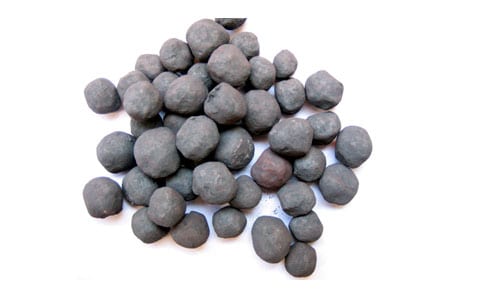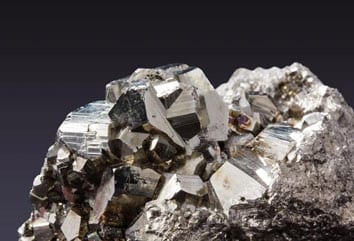Iron ore is the fourth most common element in the earth’s crust. Iron is essential to steel manufacturing and, 따라서, an essential material for global economic development. 철은 또한 차량의 건설 및 제조에도 널리 사용됩니다.. Most iron ore resources are composed of metamorphosed banded iron formations (프랑), 철분은 일반적으로 산화물의 형태로 발견되는, hydroxides, 그리고, to a lesser extent, carbonates.
The chemical composition of iron ores is apparent to be wide, especially for Fe content and associated gangue minerals. Major iron minerals associated with most iron ores are hematite, 괴티테 ()에테 (것), limonite, and magnetite. 철광제의 주요 오염 물질은 SiO2 및 Al2O3입니다.. The typical silica and alumina-bearing minerals present in iron ores are quartz, kaolinite, 깁사이트, 디아포자, 그리고 커런덤. 이들 중, it is often observed that quartz is the main silica-bearing mineral, and kaolinite and gibbsite are the two main alumina-bearing minerals.


Iron ore extraction is mainly performed through open pit mining operations, 상당한 테일링 생성. 철광석 생산 시스템은 일반적으로 세 단계를 포함합니다.: 마이닝, 처리, and pelletizing activities. Processing ensures that an adequate iron grade and chemistry are achieved prior to the pelletizing stage. 가공에는 분쇄가 포함됩니다., 분류, 밀링, and concentration, with the aim of increasing the iron content while reducing the amount of gangue minerals. Each mineral deposit has its own unique characteristics with respect to iron and gangue-bearing minerals, and therefore, it requires a different concentration technique.
Magnetic separation is typically used in high-grade iron ore beneficiation, where the dominant iron minerals are ferro and paramagnetic. 습식 및 건식 저강도 자기 분리 (Lims) techniques are used to process ores with strong magnetic properties, such as magnetite, while wet high-intensity magnetic separation is used to separate the Fe-bearing minerals with weak magnetic properties, such as hematite, from gangue minerals. Iron ores such as goethite and limonite are commonly found in tailings and do not separate very well by either technique.

부양은 저급 철 광로에서 불순물의 함량을 줄이기 위해 사용됩니다. 철광은 산화철의 직접 음이온 부양 또는 실리카의 변양 부양에 의해 농축될 수 있습니다.; 그러나, reverse cationic flotation remains the most popular flotation route used in the iron industry. The use of flotation is limited by the cost of reagents, the presence of silica and alumina-rich slimes, and the presence of carbonate minerals. 또한, flotation requires wastewater treatment and the use of downstream dewatering for dry final applications.
The use of flotation for the concentration of iron also involves desliming, as floating in the presence of fines results in decreased efficiency and high reagent costs. 어떤 표면 활성 제에 의해 혈병 또는 괴티트에서 횡설수설의 분리는 매우 어렵기 때문에 Desliming은 알루미나의 제거에 특히 중요합니다. Most alumina-bearing minerals occur in the finer size range (<20Um), 디슬리밍을 통해 제거 허용. 전체, 벌금의 높은 농도 (<20Um) 알루미나필요한 양이온 수집기 용량을 증가시키고 선택성을 극적으로 감소시킵니다.. 따라서, desliming increases flotation efficiency but results in a large volume of tailings and in loss of iron to the tailings stream.
철광석의 건조 가공은 부양 및 습식 자기 분리 회로와 관련된 비용과 젖은 꼬리 생성을 제거 할 수있는 기회를 제공합니다.. STET has evaluated several iron ore tailings and run-of-mine ore samples at bench scale (사전 타당성 규모). 철과 규산염의 상당한 움직임이 관찰되었다, 아래 표에 표시된 예제와 함께.

이 연구의 결과는 STET 트리보 정전기 벨트 분리기를 통해 저급 철광석 벌금을 업그레이드 할 수 있음을 입증했습니다.. STET 경험을 바탕으로, 파일럿 스케일 처리시 제품 회수 및/또는 등급이 크게 향상됩니다., 이러한 철광석 시험 중에 활용된 벤치 스케일 테스트 장치와 비교했을 때.
The STET dry electrostatic 미세한 철광석 분리 process offers many advantages over traditional wet processing methods, 자기 또는 부양과 같은, 포함:
Contact us to learn more about dry processing of iron ore.
참조:
Iron ore beneficiation involves a series of processes that aim to improve the purity and quality of raw iron ore. These processes include crushing, 연 삭, 자기 분리, 부양, and gravity separation, depending on the mineralogical characteristics of the ore. Each technique is selected based on the ore’s composition and feasibility to extract the maximum amount of iron while minimizing impurities.
Iron ore mining requires specialized equipment to handle the extraction and processing of ore. Common machinery includes ball mills for grinding, crushers for reducing the size of ore, magnetic separators for separating iron particles from impurities, flotation machines for fine particle separation, and conveyors for transport.
Technologies utilized for iron ore beneficiation include advanced techniques such as dry electrostatic separation, 부양, advanced gravity separation, and sensor-based sorting. These technologies aim to efficiently increase the iron content and eliminate contaminants, catering to the growing demand for high-grade iron ore and promoting sustainable mining practices.
The cost of iron ore beneficiation can vary significantly depending on the specific processes and technologies used, the grade of the raw ore, and the desired purity of the final product. It encompasses capital expenditure (Capex), such as equipment and plant construction, and operational expenditure (Opex), including labor, 에너지, 및 소모품. It’s essential for companies to evaluate these costs against prospective revenue and market demands to ensure project viability.